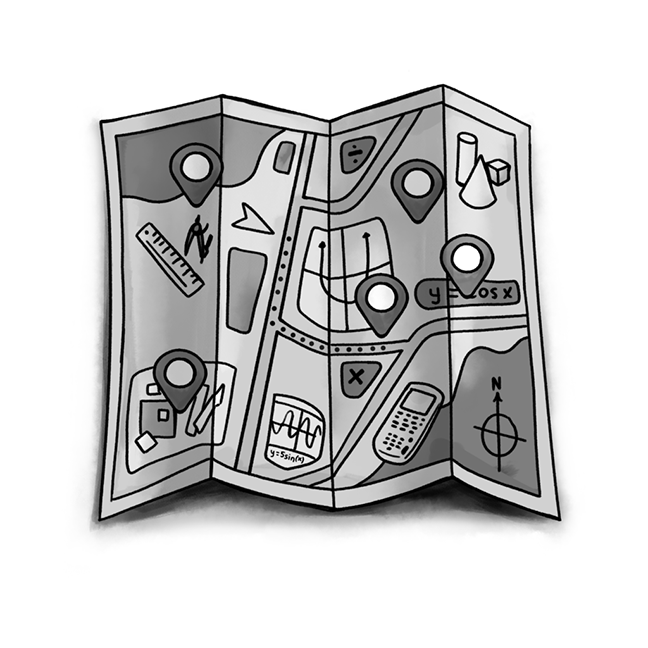Angela Kraft, Oconomowoc, WI, angelakraft@cpm.org
Do you have students who still struggle with memorizing multiplication facts or still use their fingers to find quick calculations? Or, have you ever had a student struggle to explain their thinking by saying, “Well, I know how I got it, but I can’t explain it.” While finger counting has its place in the math classroom, so does helping students to visualize calculations and patterns mentally. As a participant in the Teacher Redesign Corps (TRC) 3.0 I have been implementing number talks as often as possible with my 7th graders. My goals during these short sessions are to help students build mental calculation strategies and develop effective articulation of processes.
With effective communication among peers being the heart of CPM’s design, students need to be able to effectively explain their thinking to solve problems, as well as be able to listen and understand someone else’s ideas. In their book Making Number Talks Matter, Cathy Humphreys and Ruth Parker stress the importance of allowing the students to do the thinking rather than the teacher listing strategies for students to imitate. They explain in detail how to implement number talks and why they are so important. In short, number talks are quick problems that can be infused in any part of a math lesson.
A number talk can be implemented very easily and quickly. Simply post a problem you would like your students to mentally calculate. For example 18 x 5. Ask students to place a fist on their chest and raise a thumb when they have a solution. During your wait time, encourage students to try and solve the problem in more than one way. Students can indicate this by raising fingers from their fist as well. Once most students have arrived at an answer, ask a volunteer to share their solution. I find it helpful if you ask for all answers before asking students to explain their strategies. Then ask volunteers to explain their thinking on how they arrived at their answer. This can be the tricky part. As they explain, you, as the teacher record their strategy on the board being careful to not fix mistakes in the explanation or finish the strategy for the student. If a student is struggling, provide wait time to see if he/she can find the correct words to complete the explanation or ask probing question to assist the student along.
I have become such a fan of these quick number talks that I now implement them weekly, Number Talk Tuesday! My students look forward to these each week and I am amazed at how well my students have evolved at articulating their strategies. I have even begun to see this transfer to their daily teamwork where students have been much better communicators. They are also able to build number sense, recognize patterns in mathematics, and be exposed to the multitude of representations students use to mentally calculate problems. As a matter of fact, I had one class of 24 students be able to provide 12 different strategies for solving 18 x 5! Why not give one a try today!
